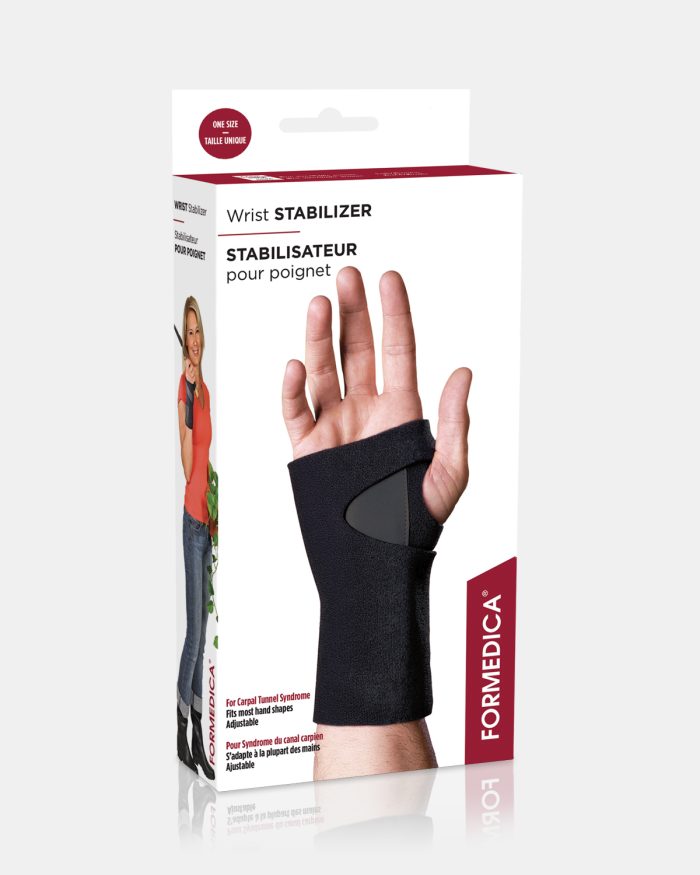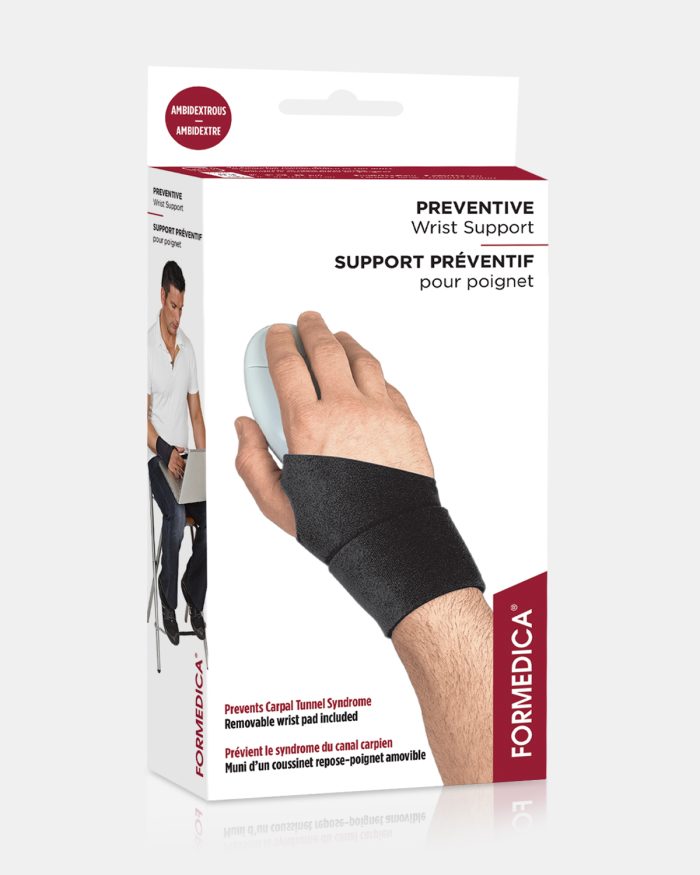In the wrist, the median nerve and flexor tendons cross a narrow “tunnel” called the carpal tunnel. When carpal tunnel syndrome occurs, the canal starts to shrink, which in turn compresses the nerve and results in inflammation. This causes hand pain and often, a loss of finger mobility, usually in the thumb.
How to recognize the symptoms of Carpal Tunnel Syndrome
Symptoms include:
- numbness and tingling in the hand and fingers;
- pain in the wrist and palm, that irradiates towards the fingers or the forearm, sometimes up to the shoulder;
- difficulty grasping simple objects, such as a cup or quart of milk.
- insensitivity in 2 or more fingers;
- a swelling feeling in the fingers;
- inability to identify cold and heat.
Who is at higher risk?
Usually, Carpal canal syndrome can be attributed to a combination of the following factors:
- repetition of wrist and forearm movements during prolonged periods;
- movements that solicit important force of the hand muscles;
- a tight hold;
- restrictive hand postures;
- manipulation of vibrating tools.
Carpal canal syndrome is the most frequent cause of workplace insurance claims, probably due to the high number of jobs that require repetitive, low impact movements, such as: cashier, hairdresser, knitting and sewing machine operator, as well as trades that require repetitive wrist and finger bending and extensions such as bakers who knead the dough.
Other examples: people who operate vibrating machinery such as maintenance crews, truck and bus drivers, and people who use a computer and mouse over 20 hours a week.
Outside the workplace, certain activities such as gardening, knitting, video games, golf, canoeing, and wheelchair sports can contribute to the syndrome.
Other causes of carpal tunnel syndrome are: injuries and arthritis of the wrist as well as neurological injuries due to diabetes.
Finally, hormonal fluctuations due to menopause, pregnancy or hyperthyroidism create a predisposition for this condition.
How to treat carpal tunnel syndrome:
Above all, rest your wrist
If no injury or illness is responsible for the syndrome, then the basic treatment is to rest by quitting the activity that caused the injury in the first place, or at least to lessen it. Wearing a sling is essential to avoid aggravating the pain, especially during the night when involuntary flexing can compress the median nerve. If your work requires repetitive movements of the hands, a sling is also recommended during the day.
Alleviate the pain
Apply ice during 10-12 minutes at a time, a few times a day. You can also use contrasting hydrotherapy which consists of immersing the hand and wrist for 3 minutes in a bowl of hot water, then immersing it in cold water for 30 seconds. Repeat the exercise three times in a row, once a day. If needed, take an analgesic tablet such as acetaminophen, or an anti-inflammatory like aspirin or ibuprofen to soothe the pain.
An ergonomical workplace
To protect your joints, opt for an ergonomic workplace and improve your environmental comfort. You can take breaks more frequently and enjoy them with stretching exercises. Also, it is a good time to practise better posture and, if you work with a computer, change the position of your keyboard. Finally, there are several models of wrist pads on the market.
Sources
http://www.passeportsante.net/fr/Maux/Problemes/Fiche.aspx?doc=troubles_musculosquelettiques_main_poignet_pm
http://www.cchst.ca/oshanswers/diseases/carpal.html
http://sante.canoe.com/condition_info_details.asp?disease_id=27

